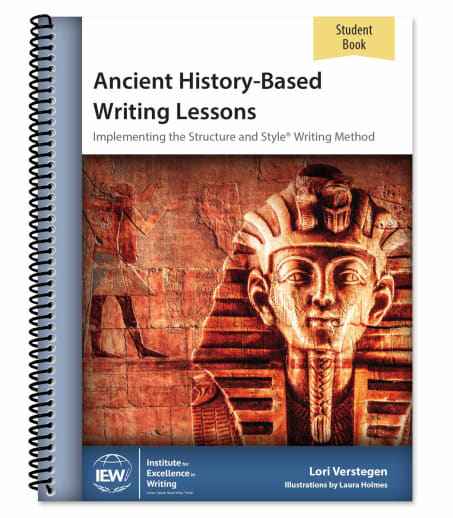TheStudent Book is consumable and provides all source texts as well as student pages. Reproducible (for families), all information the student needs is included in this book and, accordingly, the Student Resource Packet is no longer provided as a download. Some optional material as well as reproducible checklists are still available as pdf downloads with access information included in both the Student and Teacher Book.
Ancient History-Based Writing Lessons Student Book Sixth Edition
Description
The 6th edition has been updated for 2021 and features 30 lessons for grades 4-7 with source texts on topics and cultures from ancient history, the wonders of the ancient world, Greek Myths, Roman engineering, the people of ancient Asia and much more. IEW structural units 1-9 are taught in sequence. The course scope and sequence provides weekly vocabulary words as well as literature suggestions. MLA information is now included.
In this new edition, there have been numerous changes to both topics and source texts. The components of this edition are not compatible with any previous edition. A blue sheet in the front of the Student Book and Teacher Manual will explain access to online resources that are included with the purchase of these books.
The Student Book is consumable but is reproducible (for single family purchasers). Purchasers are able to download free pdf copies of reproducible checklists (32 pages) and vocabulary cards as well as these optional resources: simplified source texts, advanced additions, and exemplars.
The Teacher Manual provides reduced copies of student pages accompanied by teaching suggestions. It's assumed that Teachers have viewed and have access to IEW's Teaching Writing Structure and Style video course and own the Seminar Workbook.
| Product Format: | Softcover Book |
|---|---|
| Grades: | 4-7 |
| Brand: | Institute for Excellence in Writing |
| ISBN: | 9781623413446 |
| Length in Inches: | 11 |
| Width in Inches: | 9.5 |
| Height in Inches: | 1.25 |
| Weight in Pounds: | 1.62 |

